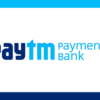Starting your own business is an enticing prospect, offering flexibility, creative freedom, personal satisfaction, and unlimited income potential. However, many aspiring entrepreneurs are held back by a lack of funding. The good news is that it is indeed possible to start a business with no money. In this article, we will explore the strategies and steps you can take to turn your entrepreneurial dreams into reality, even without significant financial resources.
Keep Your Day Job: Balancing Stability and Passion
When you make the decision to embark on your entrepreneurial journey, it can be tempting to leave your full-time job immediately and dive headfirst into your business venture. However, this approach can be risky, especially if you have limited or no funds available. Instead, consider keeping your day job while working on your business during your free time – evenings, weekends, and any other available moments. By doing so, you won’t have to solely rely on your savings or credit cards to sustain yourself. You will have a steady income that provides the necessary flexibility and stability during the early stages of your business.
Once your business gains momentum and you are confident that your earnings can cover both your business expenses and personal needs, you can consider reducing your hours at your day job or transitioning into full-time entrepreneurship.
Choosing a Business Idea That Requires Minimal Capital
The first and most crucial step in starting a business with no money is selecting a business idea that doesn’t require significant upfront capital. One effective approach is to consider service-based industries. Here are some inspiring small business ideas that can be pursued with minimal financial investment:
Freelance Writing: Utilize your writing skills to create engaging content for various businesses and publications. This can include website content, blog posts, brochures, and e-books.
Virtual Assisting: Offer administrative services to clients remotely. Tasks may include making phone calls, event planning, appointment scheduling, database management, and travel bookings.
Social Media Management: Help businesses promote their offerings through social media platforms like Facebook, Instagram, and LinkedIn. Engage with their followers and create effective marketing strategies.
Graphic Design: Showcase your creativity by designing eye-catching marketing materials such as brochures, posters, packaging, and logos. You can work with advertising agencies, marketing firms, or directly with businesses.
Tutoring: Share your expertise in a specific subject or topic by providing tutoring services. You can choose to tutor in person or virtually, catering to the needs of students of all ages.
Bookkeeping: Assist business owners with their financial management by handling bookkeeping tasks. This includes reconciling bank accounts, generating financial statements, and organizing general ledgers.
Home Organizing: Help clients declutter and create organized living spaces. Visit client homes, assess their organizational needs, and develop effective strategies for organizing their belongings.
Photography: Express your creativity through photography, offering services for various occasions such as family portraits, professional headshots, or maternity photoshoots.
Dropshipping: Start an e-commerce business without the need for inventory. When customers purchase products from your online store, you pass the orders to suppliers who handle the fulfillment.
Performing Thorough Market Research
Before diving into your chosen business idea, it is essential to conduct comprehensive market research to ensure its viability. Identify your competitors and determine your unique selling points. What sets you apart from your competitors? It could be faster service, innovative approaches, or competitive pricing. Engage with potential customers through focus groups, surveys, and social media interactions to better understand their needs, wants, and buying behaviors. Leverage online reviews and social media insights to gain valuable market intelligence.
Crafting a Comprehensive Business Plan

A well-written business plan serves as a roadmap for the growth and success of your business. It allows you to anticipate potential challenges and plan for them accordingly. Furthermore, a solid business plan can help attract investors, secure financing, and entice potential employees. Here are the key components to include in your business plan:
1. Company Overview: Provide a clear and concise description of your business, including your chosen business model and legal structure (such as an S-corp or LLC).
2. Market Research: Summarize your findings from thorough market research. Explain how your products or services will meet the needs of your target audience and differentiate you from your competitors.
3. Marketing Strategy: Outline your plan for promoting your business and reaching new customers. This may include strategies like email marketing, social media marketing, content creation, and event marketing, tailored to the nature of your business.
4. Financial Plan: Develop a comprehensive financial plan that outlines how you will generate revenue and manage your finances. Include projected income statements, balance sheets, and cash flow projections. These financial projections will demonstrate the viability of your business to potential investors and stakeholders.
5. Operations and Management: Detail the operational structure of your business and outline the roles and responsibilities of key team members. Highlight any unique expertise or experience that will contribute to the success of your venture.
6. Sales and Revenue Generation: Describe your sales strategy and revenue generation model. How will you attract and convert customers? Outline your pricing strategy, sales channels, and any strategic partnerships that can accelerate your growth.
7. Growth and Expansion: Present a clear vision for the future growth and expansion of your business. Outline your long-term goals and strategies for scaling your operations, entering new markets, or expanding your product/service offerings.
8. Risk Assessment and Mitigation: Identify potential risks and challenges that your business may face. Develop contingency plans and strategies to mitigate these risks, ensuring the long-term sustainability of your venture.
9. Visual Presentation: Make your business plan visually appealing by incorporating relevant charts, graphs, and visuals to break up the text and engage readers. Avoid using excessive industry jargon, ensuring that your plan is easily understandable to a wide audience.
By following these steps and diligently working on your business idea, you can overcome the barrier of limited financial resources and embark on a successful entrepreneurial journey. Remember, perseverance, creativity, and strategic planning are key to turning your business dreams into reality. With determination and a solid plan in place, you can achieve your goals and build a thriving business, even starting with no money.




































